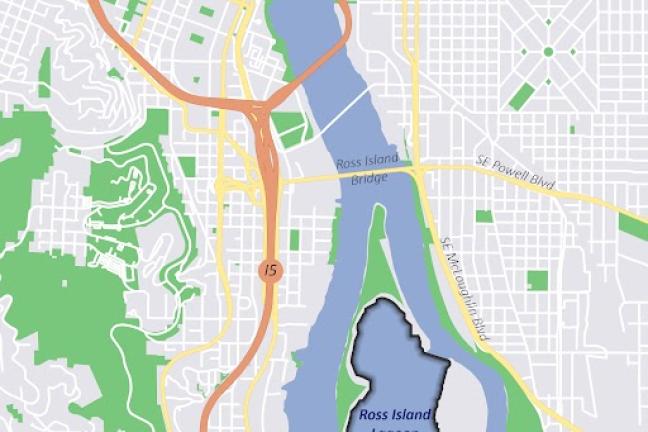Updated: Sept. 26, 2023
For publicly available photos showing the algae bloom spotted on the Willamette River on Tuesday, Aug. 15, by a Hawthorne Bridge operator, click here.
People seeking relief from the heat should avoid swimming, power boating and waterskiing in Ross Island Lagoon where toxic algae has been detected. The algae is harmful to all, but especially dangerous for children and pets.
On Sept. 25 the Oregon Health Authority continued to lift a recreation use advisory for the Willamette River due to an algae bloom to now cover only the Ross Island Lagoon in Southeast Portland. Children and pets are at increased risk for exposure. OHA issued the initial advisory on Aug. 15. Water monitoring confirms that the level of cyanotoxins in the Willamette River channel are now below recreational guideline values for people. Check the Oregon Health Authority's current advisories here.
People should avoid swimming and high-speed water activities, such as water skiing or power boating, in those areas of the river as the major route of exposure is ingestion of water. Toxins are not absorbed through the skin. However, those with skin sensitivities may get a puffy red rash.
Activities such as catch-and-release fishing, hiking, biking, picnicking, bird watching, canoeing, and kayaking are safe, and boating is safe as long as speeds do not create excessive water spray. Sprays could lead to the risk of inhaling the toxins.
Children and pets should stay out of the water anywhere near where toxic algae has been identified. Dogs can get extremely ill and even die within minutes to hours from exposure to the toxins by drinking the water, licking their fur, or eating the toxins from floating mats or dried crust along the shore.
Outreach teams from the Joint Office of Homeless Services are spreading the word to those living outside that drinking water directly from areas of the river affected by a bloom is especially dangerous. Toxins cannot be removed by boiling, filtering or treating water with camping-style filters.

